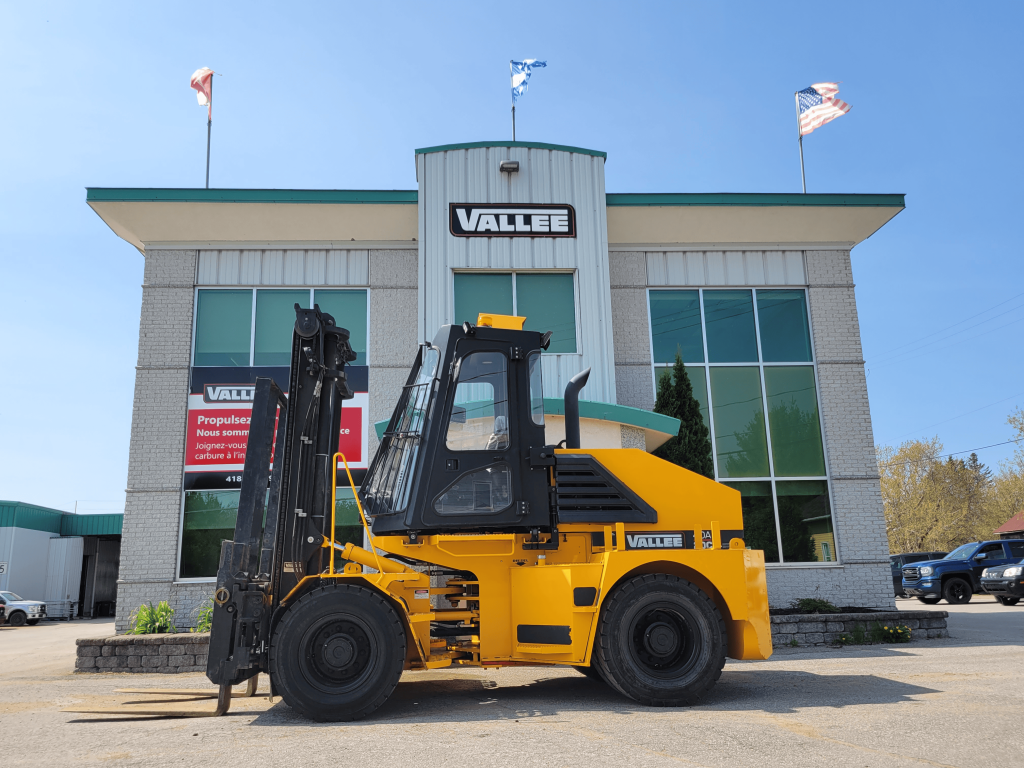In Quebec—and more broadly across North America—using a forklift is subject to strict regulations. Looking for a job in a warehouse, on a construction site, or in a manufacturing facility? A recognized certification is required to operate a lifting vehicle, particularly high-capacity models that can handle loads of up to 30,000 pounds. Here’s what you need to know to become certified and why proper training is key to reducing the risk of workplace accidents.
 Why Is Forklift Certification So Important?
Why Is Forklift Certification So Important?
Whether you’re an employer or an operator, you might wonder if forklift certification is vital. Some may view it as a mere administrative formality. However, it carries significant weight:
- For operators: It’s a mark of professionalism and reliability.
- For companies using lift trucks, it ensures that operators have the required knowledge and skills to handle equipment safely.
In the U.S., the Occupational Safety and Health Administration (OSHA) reports that lift trucks are responsible for about 85 deaths and 34,900 serious injuries every year. A lack of proper training is a key contributing factor.
To mitigate these risks, OSHA mandates certification for all forklift operators. Employers who allow uncertified workers to operate forklifts may face fines of up to $250,000 or even criminal charges in the event of a serious incident.
Both Canadian and American regulations require that training cover all relevant forklift classes and be tailored to the specific conditions of each workplace. Certification not only helps reduce accidents and associated costs, such as insurance claims and property damage, but also boosts operational efficiency and builds team confidence.
How to Become a Forklift Operator in Canada
The certification process may vary by province, but several steps and responsibilities remain consistent across Canada. Occupational health and safety legislation is typically under provincial jurisdiction.
In general, employers are responsible for ensuring that their forklift operators are properly trained and certified. Only trained and certified personnel are authorized to operate lift trucks legally. In Canada, the CSA Standard B335-15 outlines national safety guidelines, training requirements, and instructor qualifications.
In Quebec
The CNESST (Commission des normes, de l’équité, de la santé et de la sécurité du travail) regulates and oversees forklift certification in the province.
- A typical process includes:
- A needs assessment and selection of a recognized forklift training program.
- A mix of classroom theory (covering safety, regulations, and operations) and supervised practical training.
- Training can be provided by:
- Forklift distributors like Vallée
- Industry associations
- The Ministry of Education
- Approved private consultants
After training and skills evaluation, a temporary certificate may be issued. CNESST then reviews the documentation and, if compliant, provides the final certification.
- In Quebec:
- The minimum age to operate a forklift is 16 years old.
- Refresher training is required every three years or in certain specific cases.
Specialized manufacturers such as Vallée also offer tailored training services for high-capacity forklifts. Training can take place at the employer’s facilities or directly on-site, allowing for customization to specific equipment and operational needs.
In Other Provinces (e.g., Ontario)
In Ontario, the responsible body is the Ministry of Labour, Immigration, Training and Skills Development.
- Key distinctions from Quebec:
- The employer is typically responsible for managing and validating the certification process.
- Training must meet provincial standards and can be delivered internally (by qualified personnel) or externally (by approved providers).
- Employers must:
- Ensure operators pass both theoretical and hands-on evaluations.
- Maintain a record of certified operators, including forklift types and evaluation details.
How to Get Forklift Certified in the United States
In the U.S., OSHA governs forklift certification and sets out precise requirements. Employers bear the primary responsibility for ensuring their operators are trained and certified.
- The process includes:
- Formal classroom-style instruction (delivered by the employer, a qualified employee, or a third-party provider).
- Hands-on training specific to the equipment and workplace environment.
- Performance evaluation conducted on-site.
Online courses can satisfy the theoretical component, but OSHA requires an in-person practical evaluation before an operator is certified. The final certification must be issued by the employer, confirming that the individual is competent in operating the specific equipment under real working conditions.
Sources
- CCOHS – Forklift Operator Safety
- CCOHS – Forklift Hazards
- CNESST – Sécurité des chariots élévateurs (PDF)
- CCOHS – Forklift Operator (duplicate link)
- CNESST – Guide chariots élévateurs (PDF)
- Ontario – Directives chariots élévateurs 1
- Ontario – Directives chariots élévateurs 2
- Ontario – Directives chariots élévateurs 7
- Ontario – Directives générales chariots élévateurs
- Ontario – Conformité sur chantiers de construction
- Indeed – Forklift Operator Certification
- OSHA Education Center – Certification Info
- Logisnext – Forklift Certification FAQs
- XO Safety – Who Can Certify Forklift Operators?
- OSHA – Federal Register (1995)
- OSHA – Powered Industrial Trucks Training




 Why Is Forklift Certification So Important?
Why Is Forklift Certification So Important?